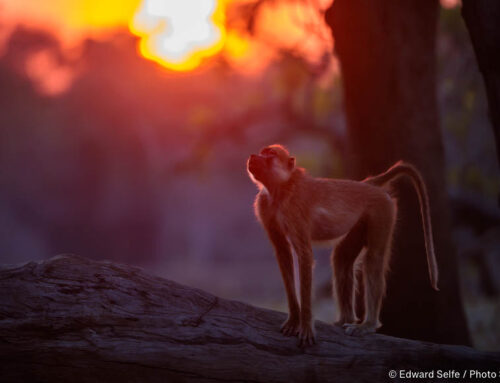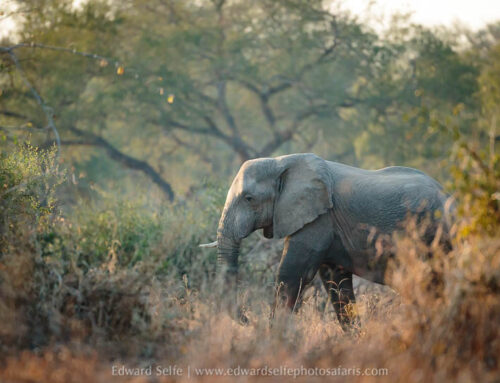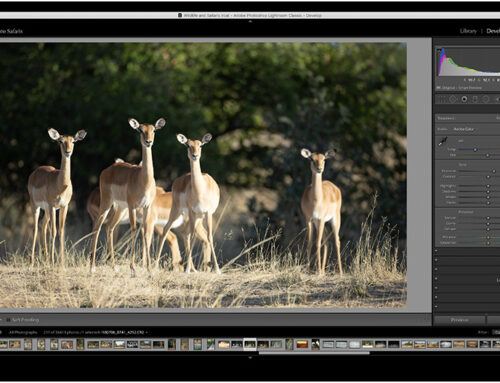While I was in the UK in January, I searched the online camera retailers’ second-hand listings for Canon’s EF 200-400mm f4 IS USM + 1.4 TC lens. I was very pleased to find one at a good price, with all its original packaging and in excellent condition. While this is not an inexpensive lens by any measure, buying second hand is a very sensible solution for most. Many online retailers have excellent second-hand listings and buying from them gives you the option of a 6 month warranty and buyer protection.
[In fact, I bought a copy of this lens from a reputable retailer and, when it arrived by courier, it was significantly more worn cosmetically than they had advertised. I am not very concerned about cosmetic damage, but it speaks more about the life a lens has led before and might indicate lack of care in handling. No problem, they took it back and gave me a full refund. Lessons learned from this: always ask for supplementary photos of lenses before buying online, and ensure to buy from a retailer who offers a no-questions-asked refund arrangement for a given period.]
When lens number 2 arrived – no problems this time – I made sure to record my initial impressions, since they fade quickly. We are all resistant to change, so it’s important to notice how quickly something new becomes the norm; the less time that takes, the more likely it is that the piece of kit you have bought is right for the job. But first, a bit of background.
The rationale for purchasing the Canon 200-400mm lens:
As a photo-guide, I am rather unusual because I drive and guide my guests simultaneously. I believe that the precision vehicle positioning and the responsiveness to changing wildlife activity that I can achieve from the driver’s seat is a key benefit to my guests. But, constantly reading animal behaviour, relaying this to my guests, advising them of suggested camera settings, moving the vehicle and explaining what will happen next, keeps me pretty busy! So my relationship with my own camera kit has to be very practiced and very smooth.
Some wonder why I am taking photos at all when I have so much to think about. Largely the reason for this is that it is only by taking photos myself that I am able to give the best advice and notice the small tweaks that are needed to make the best photos. I have, several times, left my camera in the case when I have a new group of guests so that I am not at all distracted; every time, I have had to retrieve my camera soon after to give guests the best possible advice on settings with respect to the changing light!
My current set up is two full-frame cameras, one with a 500mm f4 (version 1) lens and the other with a 100-400mm f4.5-5.6 (version 2) lens. This set up has suited me very well in South Luangwa and I love these two lenses and the 1DX (mark 1) cameras that I have attached to them. So why change my set up?
Firstly, I have had to repair the 100-400mm lens several times and I believe that my copy of that lens (I am not speaking for all copies) is not up to the sustained battering that living on safari entails. I need that lens for other photographic work so I don’t want to destroy it! I have heard very few other people have problems with that lens, so I suspect that it is the hard life that mine leads and/or that mine is a poor copy of that lens which is the problem. I absolutely still think that the lens is a fantastic safari lens, especially for people who use it for a few weeks each year, rather than solidly for months.
Secondly, I am increasingly travelling further afield and wanted to have the ability to “travel light” with one lens and one camera body if needed. Sometimes small planes only allow a modest luggage allowance and I want to enable my guests to bring extra kit by minimising my own. With my current set up, choosing to take one of either a 500mm f4 or a 100-400mm is tricky, but the new 200-400mm lens solves that problem, to some extent, by covering 200mm to 560mm in a lens that delivers quality images that have the feel of those created by large prime lenses. If I have the weight allowance, I can put a 70-200mm f2.8 lens on my other camera body and carry that too.
First impressions:
Removing the lens from the trunk, it’s clear that this is a dense and well-made piece of kit. There are endless reviews and videos of the technical specification of this lens, so I will not go further into this. But suffice to say that zoom and focus rings are smooth and easily turned, the tripod collar is beautifully machined and the lens hood attaches smoothly in both deployed and reverse positions. The all-important lever, that instals the 1.4x teleconverter into the barrel, operates cleanly with a reassuring “thunk” in both directions to ensure that you know it has moved into place.
Focal length:
Having now used the lens in the bush on a number of occasions, I can comment on its performance in real-world use, which is, after all, the most important test. As anyone who has been on safari will know, the 200mm to 600mm range is the sweet-spot for many safari sightings. So the lens fills that role very well; in fact, if anything, I was surprised how “long” 200mm was, and occasionally wished to be able to zoom out further. On the other end of the range, I was happy to discover how “long” 560mm was, giving me a bit of extra reach that I had not enjoyed on the 500mm f4 lens that I have been using for years.
By way of illustration, here are a few images of a (very compliant) zebra to show the focal range that this lens offers. Firstly 200mm, then 400mm and finally 560mm with the teleconverter installed.
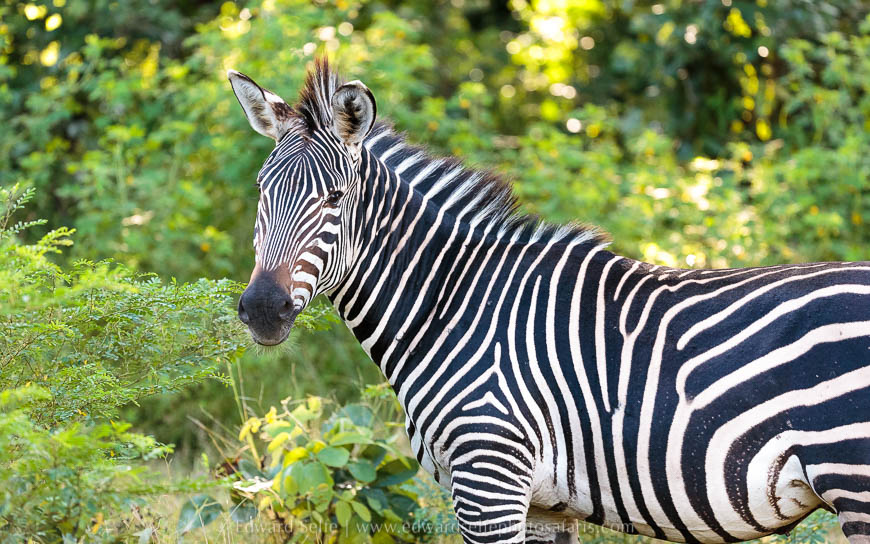
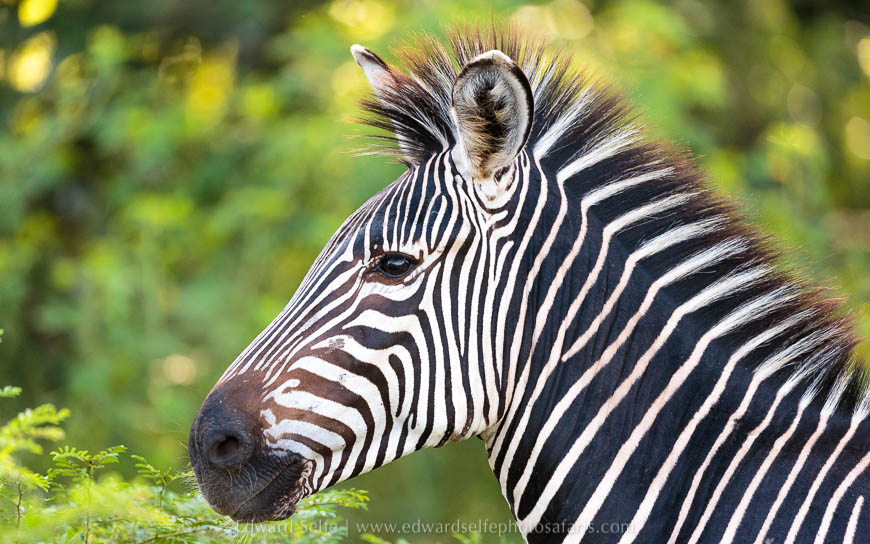
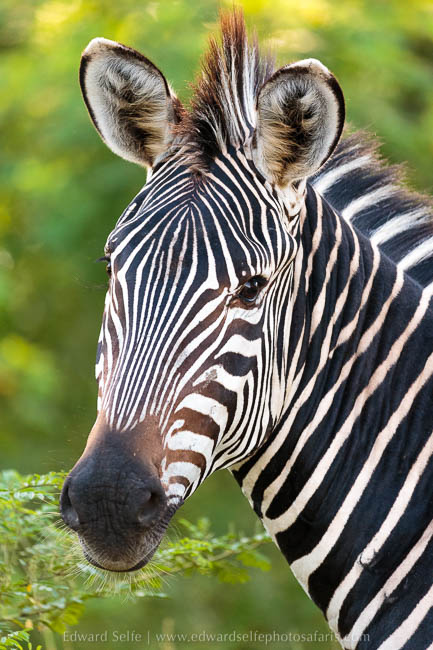
It’s clear that the focal length range is very useful and the “feel” of the images is very nice and reminiscent of the high compression of subject and background that prime lenses generate. There is no perfect safari photo set up (even 6 cameras, one attached to each of Canon’s primes 200mm, 300mm, 400mm, 500mm, 600mm and 800mm would create a massive storage and access problem!) but this lens comes pretty close to solving it.
Speed and Focus:
As would be expected of a lens in this price and quality bracket, its autofocus speed is very fast and accurate. There may be exact measurements online of subject acquisition compared to other primes, but I’d be happy to say that it is more than fast enough not to be an impediment to my photography. Focus is spot on, with a higher hit rate than I am used to from my 500mm f4 which is a considerable accolade given that this is a zoom.
Image Quality:
As with AF speed, it should be expected that image quality will be excellent with a lens in this price and quality range. And it doesn’t disappoint. Combining AI SERVO focus with a long focal length and relatively wide aperture, it’s important to ensure that IQ is determined on images that are absolutely in focus. Images from this lens compare well with those from my 500mm f4 though the slightly reduced background blur (from the smaller aperture) gives the false impression that this is not the case.
By way of illustration once more, here are a few 100% crops from some recent images to show the level of detail achievable. These are JPEGs created from RAW images with no sharpening applied.
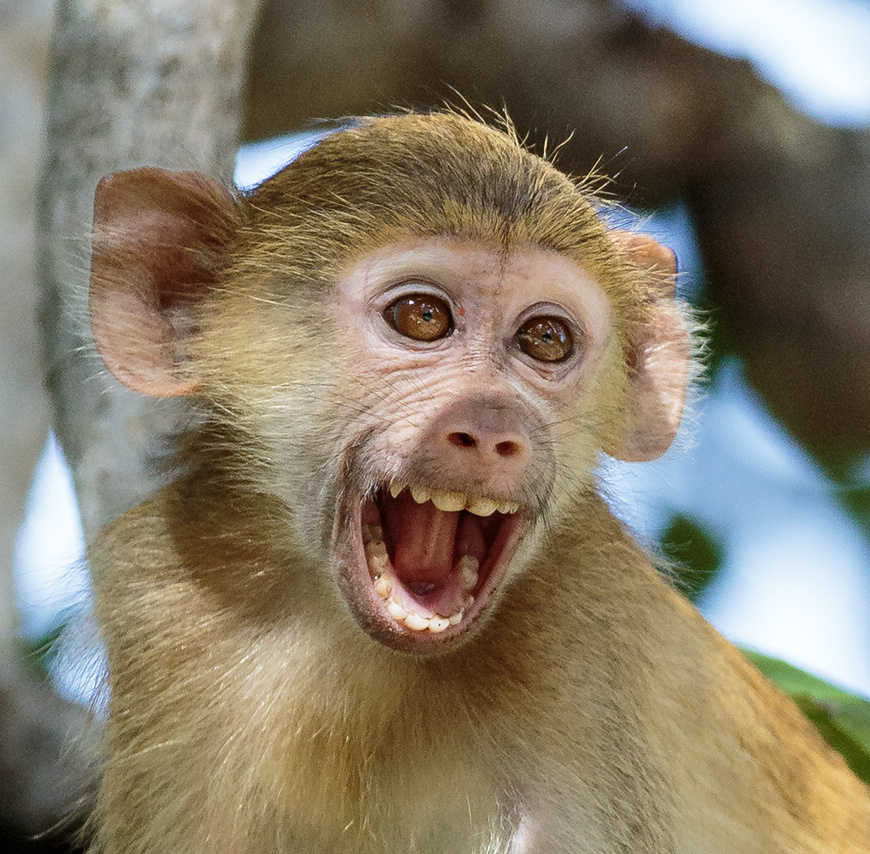
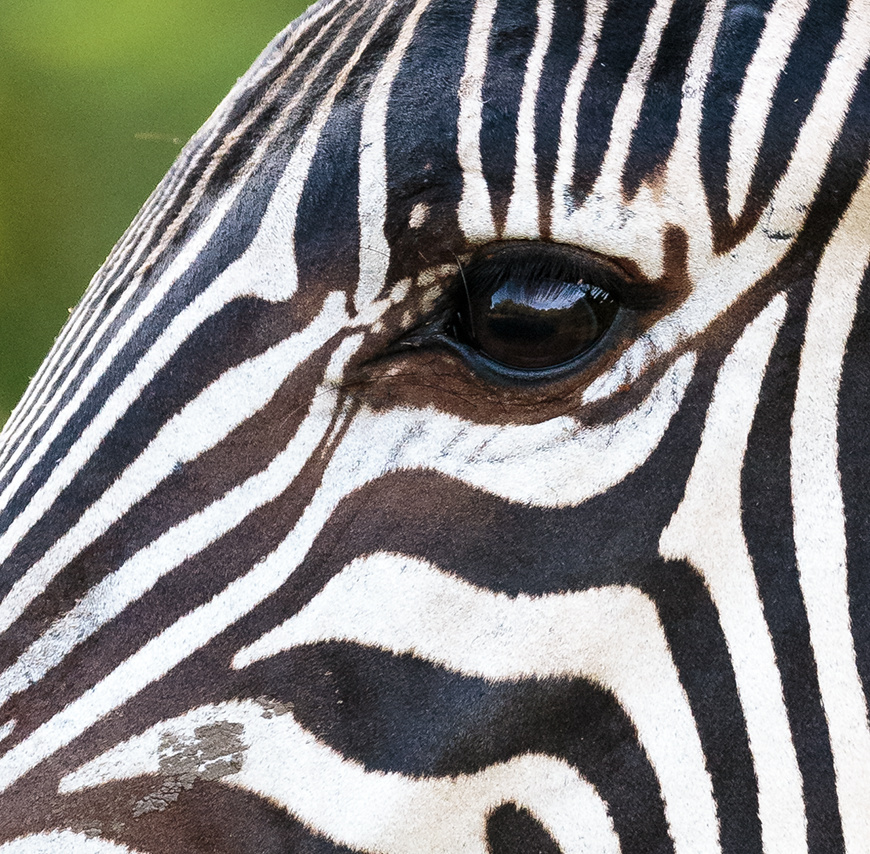
Handling and Real-life Use:
For me, this is the real acid-test. I knew that the lens would be well-made, I knew it would deliver amazing image quality and I knew that its autofocus would be fast and accurate enough to keep up with anything I threw at it. But how would it handle in the field? How would the incredible function of a built-in 1.4x converter work in practice? These are the questions that can only be answered after decent testing.
First up, it’s important to note that I have been using the same set up (as described above) for some time. Selecting one of my two cameras, choosing settings and adjusting focus are second-nature to me; clearly much of this is applicable to a new lens, but equally, I will be very sensitive to changes in my usual routine. I am more than willing to absorb these changes, and I’m sure I will over time, but it’s worth noting what was straightforward and what took longer to get used to.
This is a large lens. Anyone who is used to a 500mm f4 (or larger) will perhaps notice the 200-400’s more compact size and narrower (more cylindrical) shape. But for most, this is a large and heavy object to be holding, pointing and supporting for any period of time. The bulk of its weight is placed towards the camera end, meaning that it is easier to swing around than the 500m f4 that I am used to. However, on the negative side, this means that when you remove your right hand, with your left hand on the zoom ring, the lens doesn’t balance perfectly…it tends to drop towards you. Perhaps with a 5D-sized camera (without battery grip) this would be less of an issue. However, given its capabilities, it is quite compact and, with hood reversed, is readily packed into a carry-on sized rucksack. That is key to those wanting to use it to create pro-quality images in remote areas.
While this lens is similar in build, weight and size to many of the larger primes on offer, it differs in one fundamental way; it is not a prime! This is both its biggest selling point, and the largest challenge in using it. Primes are large and heavy, but the only requirement from the user is to hold it steady, compose and shoot. Adding a zoom function to a large lens requires the user to support the weight of the lens while composing and also turning a rotating zoom ring. This is not impossible, and is considerably assisted by using a support system like the ones I have for my guests or a tripod. But hand-holding this lens, while trying to keep an approaching subject well composed in the frame is challenging and will take practice; it’s likely that image keeper rate will drop dramatically by hand-holding too.
There is also the issue that having a zoom lens sometimes offers too many options. Should I zoom in or out? Should I give more space around the subject or less? With so many things to think about (shutter speeds, AF, focus points and keeping the subject in frame) sometimes having more options available to you is not helpful! Thought this is a strange thing to say about this lens’s most valuable selling point!
There are a couple of ways of dealing with this: I found that installing the lens’s shorter lens-foot is better for hand-holding. The foot sits in the palm of your hand and allows you better mobility with your fingers to control the zoom ring; the full-sized foot (preferable for all other uses) hinders this finger movement. Clearly, this is only useful for those planning to hand-hold the lens.
There is a second way to approach the “problem” of zooming while hand-holding the lens’s weight. When you really have to hand-hold, consider that you actually do have a prime lens. Enjoy the fact that you have every prime from 200mm to 560mm in your hands, choose a focal length and then stick with it as your subject approaches. If there is time during the sighting, change your focal length; but if time is tight, maintain a suitable focal length and keep shooting as you would with a prime. It is true that this somewhat defeats the point of a zoom, but I am only suggesting this for hand-holding use and if a sighting is sufficiently high-pressure that you can’t possibly miss a shot!
As for the lever that controls the 1.4 TC. I found that this is easy to engage and dis-engage using a brief flick of a finger. I tend to use my right hand to do this (reaching over the lens barrel) so that I can maintain the lens pointing at the subject. I would therefore prefer the lever on the top of the lens but I imagine that this would have caused problems for the waterproofing of the lens. Added to this, when on a tripod, the lever is in exactly the right place for left-hand use. So in summary, no problems here!
As I said at the start of this review, this is an initial impression of this lens in field-use. I suspect that the few small challenges that I have faced with the lens will melt away as I get used to using it more. I will update this report, or add a new one in due course, perhaps when I have done a season with the lens in the field.
[Update 06/04/20: I just photographed the first fast-action, exciting sighting with this lens. We found a leopard close to last light and had 3 or 4 interactions with her before she melted into the bush (and into the dark!). I found that my standard techniques took over and I was readily changing ISO to handle the lighting situations (as expected) and adjusting the AF points to be in the right spot (as normal) but I was pleasantly surprised to find that I was easily zooming in and out to change my composition. I found that turning the tripod foot to the top of the lens, like I have on my prime, I could rest the weight of the lens on the “heel” of my hand, and use my fingers to rotate the zoom ring. I was very pleased with this outcome and it indicates that with practice, one of my only real-world concerns about this lens can be overcome.]
For now, when I am going out for my own photography, I will take the following kit (keeping in mind that I do a lot of bird photography when I am on my own!). One camera with a 500mm f4 on a 1.4x converter (giving 700mm) and this 200-400mm on the other camera (giving 200-560mm). While space would be an issue in a vehicle with my guests, and on any aeroplane!, this would really cover all bases for a day out photographing on my own!
Thank you for reading all of this text-heavy blog entry. I hope it is helpful for anyone considering the 200-400mm lens. As always, any questions in the space below!
[Update 28 Apr 2020] A supplementary update: I was finding the sharpness of images shot with the TC installed was nowhere near that of the native lens. It is to be expected that the quality will drop slightly. After some close observation, I discovered that there was a slight back-focusing issue. I adjusted the micro-adjuster in the camera for that lens and all seems to be well. However, there is still a lower hit rate with the TC installed than with the native lens that I put down to the reduced amount of light entering the camera’s AF system. Perhaps with newer camera bodies, that perform AF better in low light, this will be less of an issue. It’s particularly a problem with the usual AF problem suspects – flat, low-contrast subjects in poor light or against the light. I will update more in future.
[Update 21 May 2020] I have now been using this lens extensively for the last few weeks. I have put it through a wide range of situations and tested it extensively. I am very happy with the image stabilisation, the handling of the lens, the speed of focus and the zoom function (now that I have practiced turning the zoom ring while supporting such a heavy lens!). I have noticed that the lens does not perform as well as my 500mm f4 prime in a small range of circumstances; it remains to be seen how much this is a problem for me, and whether a camera or firmware update (or more practice) can overcome this. Specifically the lens does not focus as well as the prime in low light, the AF hit accuracy rate is lower and the focus is more “twitchy” on AI Servo mode. When shooting backlit scenes (with a halo of light around them) the lens seems to find it harder to lock onto the subject, sometimes requiring a focus-and-recompose technique to lock-on perfectly. These problems are exaggerated with the built-in 1.4x TC installed and this is to be expected. I should emphasise that this is an AF accuracy issue, not a sharpness issue as this lens can and does produce very sharp results!
With no TC installed, the lens is an f4 lens, so I would expect its focus performance (which is heavily affected by the amount of light entering the lens) to be comparable with my 500mm f4 prime. Interestingly, the camera tells me that fewer AF points are cross-type sensitive with the 200-400mm f4 than the 500mm f4…. Why that might be, I do not know. In due course, I’ll do a comparison of the 200-400mm f4 at 500mm f5.6 against the 500mm at f5.6 to illustrate the issue. However, as with all equipment, we need to understand its limitations and I am still extremely happy with the performance of this lens and the one-lens-one-camera set up that it offers for travelling.

